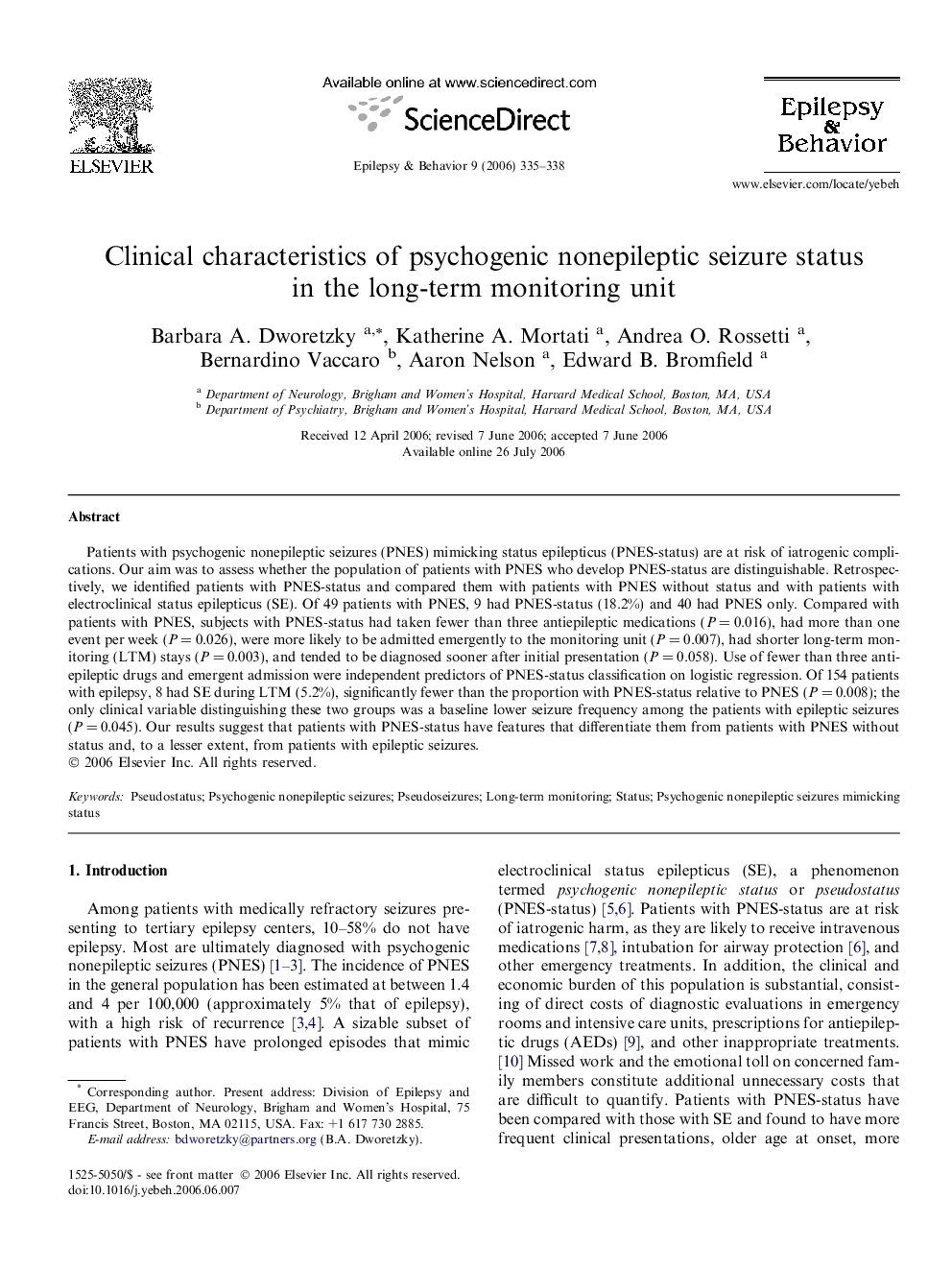| Article ID | Journal | Published Year | Pages | File Type |
|---|---|---|---|---|
| 3051449 | Epilepsy & Behavior | 2006 | 4 Pages |
Patients with psychogenic nonepileptic seizures (PNES) mimicking status epilepticus (PNES-status) are at risk of iatrogenic complications. Our aim was to assess whether the population of patients with PNES who develop PNES-status are distinguishable. Retrospectively, we identified patients with PNES-status and compared them with patients with PNES without status and with patients with electroclinical status epilepticus (SE). Of 49 patients with PNES, 9 had PNES-status (18.2%) and 40 had PNES only. Compared with patients with PNES, subjects with PNES-status had taken fewer than three antiepileptic medications (P = 0.016), had more than one event per week (P = 0.026), were more likely to be admitted emergently to the monitoring unit (P = 0.007), had shorter long-term monitoring (LTM) stays (P = 0.003), and tended to be diagnosed sooner after initial presentation (P = 0.058). Use of fewer than three antiepileptic drugs and emergent admission were independent predictors of PNES-status classification on logistic regression. Of 154 patients with epilepsy, 8 had SE during LTM (5.2%), significantly fewer than the proportion with PNES-status relative to PNES (P = 0.008); the only clinical variable distinguishing these two groups was a baseline lower seizure frequency among the patients with epileptic seizures (P = 0.045). Our results suggest that patients with PNES-status have features that differentiate them from patients with PNES without status and, to a lesser extent, from patients with epileptic seizures.
